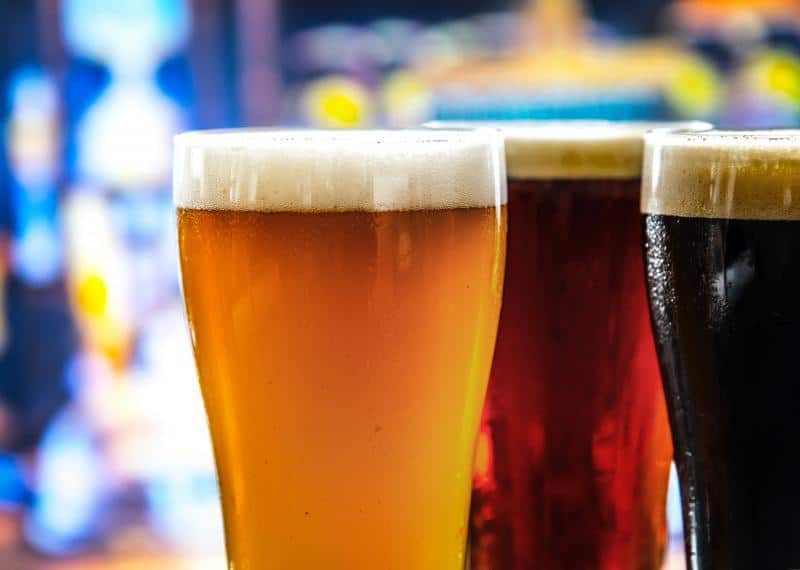Drunk Driving Laws in Michigan

It’s common knowledge that drinking and driving in the state is illegal. Even so, an astounding 30% of Michigan auto accidents involve alcohol! But do you know the laws pertaining to this topic? We cover the topic often because it is important for Michigan residents to understand. But do you know all the laws pertaining to this topic? We cover the topic often because it is important for Michigan residents to understand. Grand Rapids car accident attorney, Tom Sinas, and Bryan Waldman, Michigan personal injury lawyer, have both covered the importance of drunk driving laws in Michigan multiple times in the media. Below are the important takeaways.
Auto Accidents Involving Alcohol – Civil and Criminal Repercussions
Accidents involving alcohol are very complex with many layers. In accidents involving alcohol use that result in injuries, the criminal and civil justice systems frequently overlap. Our criminal justice system often results in the incarceration of the wrongdoer, whereas our civil justice system usually involves claims for money damages. And drunk driving cases almost always involve both.
Basics of Drunk Driving Laws in Michigan
Michigan has a zero-tolerance rule for drivers under the age of 21, meaning it is illegal to have any amount of alcohol in the system. For drivers over the age of 21, operating a vehicle with a blood alcohol content (BAC) of 0.08 or higher in Michigan is a crime. The criminal penalties for drunk driving increase with each offense. The first two offenses result in a misdemeanor, and 3 or more offenses result in a felony.
Injuring or killing someone while drinking and driving is a felony offense. While a drunk driving accident that causes injury results in a five-year felony charge, an accident that causes death results in a 10-year felony charge. To recap these consequences, see below:
- Driving with a BAC of 0.08 or higher: first two offenses are a misdemeanor, 3+ offenses are a felony
- Driving with a BAC of 0.08 or higher resulting in injury: 5-year felony
- Driving with a BAC of 0.08 or higher causing death: 10-year felony
“Super Drunk” and Driving
Michigan law defines the term “super drunk” as blood alcohol of 0.17 or more. When you are pulled over at this level penalties are harsher, such as increased jail time, more fines, and a longer suspension of your driver’s license.
Implied Consent and Driving in Michigan
When you operate a vehicle in Michigan, you are implicitly consenting to have a breathalyzer conducted should a police officer suspect you are driving under the influence. Refusing to do so could result in an automatic addition of points to your license or complete confiscation.
Financial Costs of Drunk Driving
The financial costs associated with drunk driving misdemeanors add up quickly. If a driver receives an OWI (Operating While Intoxicated), commonly called a DUI (Driving Under the Influence), auto insurance won’t cover the expenses legal other associated expenses that follow and will likely increase future coverage rates. Below is a list of potential expenses for receiving a DUI/OWI:
- Car tow/storage costs
- Jail time or the cost of the bond
- Alcohol counseling
- Insurance rate increase
- Interlock device installation/rental/maintenance
- The potential loss of your job/professional license
- Fines and court costs
Compensation for Victims Injured in Drunk Driving Accidents
The financial costs of drunk driving accidents, especially ones that result in injury or death, are significant. Injured victims will undoubtedly incur medical expenses. The injured victim will first turn to their own auto no-fault insurance policy, or the policy of a resident relative, to pay no-fault benefits, which include medical expenses. However, drunk driving accidents are often very serious, and damages may extend beyond what is compensable under the victim’s no-fault policy. In instances of “quality of life” damages, such as non-economic damages including pain and suffering, loss of consortium, loss of function, etc., and excess economic losses, injured victims of drunk driving accidents may then be able to pursue a second claim entirely against the drunk driver.
Restitution and Bankruptcy from Drunk Driving Accidents
Victims injured in a drunk driving accident have the right to restitution, or to “be made whole” for their losses. Additionally, insurance companies can also make restitution claims against drunk drivers for having to pay expenses on behalf of victims. The bankruptcy code considers restitution or personal civil debt stemming from drunk driving as non-dischargeable. For those who violate Michigan’s drunk driving laws, bankruptcy proceedings will not eliminate that debt. In brief, drunk driving expenses can total hundreds of thousands, or even millions, in financial cost.
There is no way to measure the emotional cost of being injured or losing a loved one in an accident caused by a drunk driver. Unfortunately, that expense can far outweigh the financial cost, and the emotional weight will likely never be lifted from the victim, their family members, or the driver themselves. Drunk driving laws in Michigan are designed to keep the roads safe and can result in severe consequences if broken. If you have been drinking, make sure to use a designated driver or rideshare service such as Uber or Lyft.
What if Both Drivers Are Intoxicated at the Time of the Crash?
Unfortunately, in some instances, both drivers have alcohol in their system while operating the vehicle. You may be wondering how the law treats these instances. Michigan has a special state statute on this very issue which was passed in 1996. The statute states that in cases of death or injury if a person was intoxicated and their intoxication was more than 50% the reason for their injury or death, it is an absolute defense. Therefore, this statute bars claims when the victim’s own intoxication was more than 50% the cause of the accident.
But what happens if the victim’s intoxication is found to be less than 50% of the cause of the accident leading to their injury or death? In these cases, the victim’s recovery in a civil case is reduced by the percentage of their own fault, also known as comparative negligence.
For example, if the victim’s damages were $100,000 and the jury or judge concluded their intoxication was 45% of the reason for the crash that caused the injury. The victim would then receive $100,000 [total damages] – $45,000 [45% fault] = $55,000 in damages.
How is Percentage of Fault for Drunk Driving Collisions Determined?
All of these percentages may have your brain spinning. You’re likely wondering how the percentage of fault when both drivers are intoxicated is factored. Resolving fault is difficult to resolve, and in cases where resolution cannot be found, a judge or jury will determine each driver’s responsibility percentage in court.
Don’t drink and drive, the consequences are simply not worth the risk.

